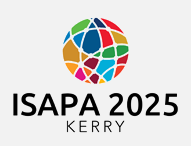Start Date
17-6-2025 9:00 AM
End Date
17-6-2025 10:30 AM
Abstract
Introduction Data from Western countries indicate that many children with visual impairments (VI) are significantly less physically active than their sighted peers (Aslan et al., 2012; Houwen et al., 2009; Zhu & Haegele, 2019). As physical behaviour may be influenced by environmental and cultural factors (Burahmah et al., 2023), we aimed to identify barriers and facilitators to physical activity participation among children with VI in Middle Eastern countries additionally, considering that no research on this topic has been published.
Methodology Twenty physical education (PE) and special education teachers with experience teaching children with VI were recruited from Jordan, Egypt, Saudi Arabia, The United Arab Emirates, and Qatar. Two focus group interviews were conducted. NVivo 10.0 software was used for data analysis following a thematic approach to identify key themes.
Results Study results showed that a lack of knowledge, lack of parental interest in physical activity, and limited physical abilities of children with VI were identified as the main barriers to physical activity participation of children with VI. Furthermore, the presence of policies and pathways that encourage children to be physically active and stakeholders’ relationships with government sectors were identified as the key facilitators.
Conclusions Study participants consider attending specific courses on teaching sports to children with VI as necessary. PE teachers and sports coaches should be qualified to develop and contribute to promoting appropriate physical activity programs for children with VI in both schools and sports clubs.
Recommended Citation
Qasim, Samir; Hindawi, Omar; and Saad, Amr, "Barriers and Facilitators of Physical Activity Participation among Children with Visual Impairments in the Middle East" (2025). International Symposium of Adapted Physical Activity and International Symposium on Physical Activity and Visual Impairment and Deafblindness. 3.
https://sword.mtu.ie/isapa/2025/day2/3
Barriers and Facilitators of Physical Activity Participation among Children with Visual Impairments in the Middle East
Introduction Data from Western countries indicate that many children with visual impairments (VI) are significantly less physically active than their sighted peers (Aslan et al., 2012; Houwen et al., 2009; Zhu & Haegele, 2019). As physical behaviour may be influenced by environmental and cultural factors (Burahmah et al., 2023), we aimed to identify barriers and facilitators to physical activity participation among children with VI in Middle Eastern countries additionally, considering that no research on this topic has been published.
Methodology Twenty physical education (PE) and special education teachers with experience teaching children with VI were recruited from Jordan, Egypt, Saudi Arabia, The United Arab Emirates, and Qatar. Two focus group interviews were conducted. NVivo 10.0 software was used for data analysis following a thematic approach to identify key themes.
Results Study results showed that a lack of knowledge, lack of parental interest in physical activity, and limited physical abilities of children with VI were identified as the main barriers to physical activity participation of children with VI. Furthermore, the presence of policies and pathways that encourage children to be physically active and stakeholders’ relationships with government sectors were identified as the key facilitators.
Conclusions Study participants consider attending specific courses on teaching sports to children with VI as necessary. PE teachers and sports coaches should be qualified to develop and contribute to promoting appropriate physical activity programs for children with VI in both schools and sports clubs.

